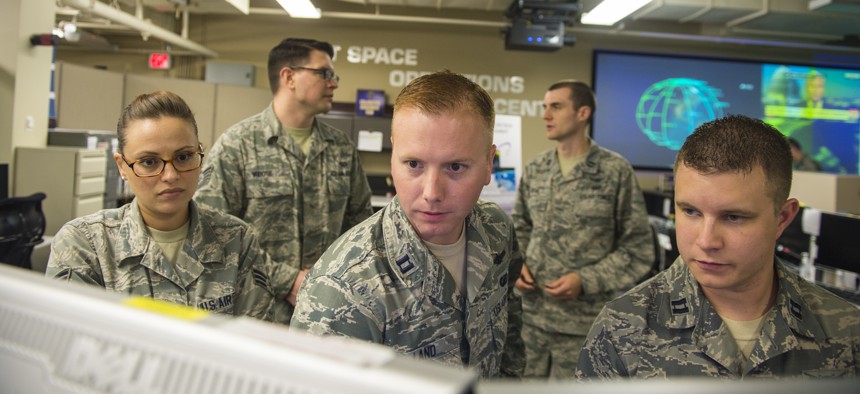
Airmen of the Joint Space Operations Center monitor computer systems designed to detect, track, and identify all artificial objects in Earth's orbit at Vandenberg Air Force Base, Calif., in 2014. U.S. Air Force / Airman 1st Class Krystal Ardrey
Number of Objects in Low Earth Orbit Jumps 22% in 2 Years: Space Operations Command
Need to track, detect objects driving need for new space domain awareness investment.
U.S. Space Command is tracking almost 35,000 objects in low Earth orbit, a 22 percent increase from just two years ago, Lt. Gen. Stephen Whiting, the head of Space Operations Command said Wednesday.
The jump is due “to the mega constellations that we've seen launched. Also some debris-generating events, but it is a substantial increase in the number, the amount of debris and satellites that we're tracking on orbit today,” Whiting said.
The need to keep track of all that is pushing the command to improve all of its space domain awareness capabilities, he said.
Mega constellations are the large groups of small satellites launched by private firms to provide relatively inexpensive global telecommunications services. Low Earth orbit is also seen as key to Pentagon efforts to detect a new generation of hypersonic missiles.
The burgeoning use of these orbits is driving the need to be able to more quickly detect threats to those assets, Whiting said.
“We are concerned about direct ascent ASAT,” or anti-satellite weapons, he said. “We're concerned about non-kinetic jamming of our satellites, we're concerned about cyber threats, and we're concerned about those types of activities. I think over the next five years, we will see those grow, and proliferate.”
Because of the growth of commercial low Earth orbit satellites the U.S. Commerce Department has been tasked with standing up its own agency to track all the commercial orbits. But Space Command will still keep watching both the commercial and military side, Whiting said.





